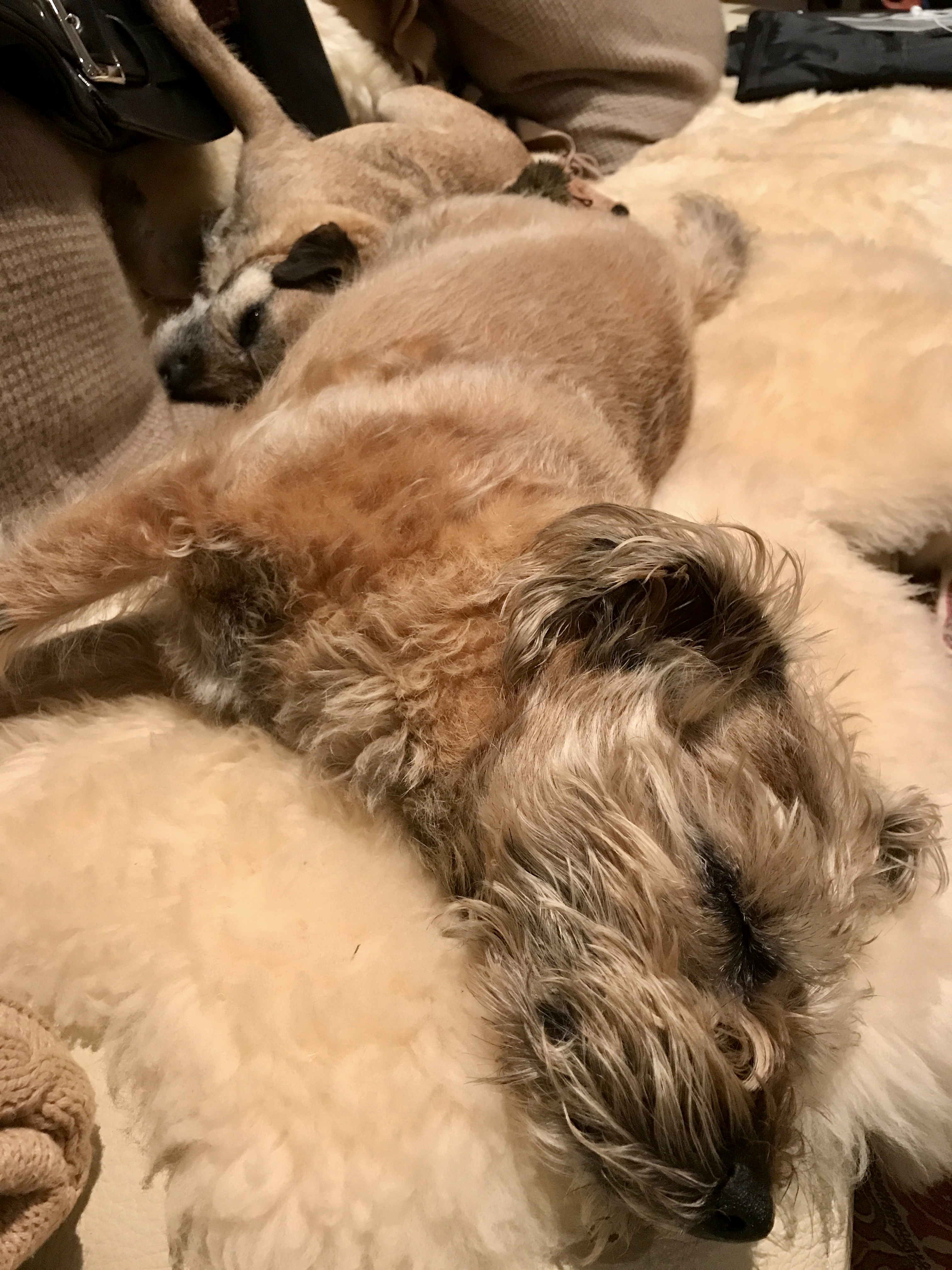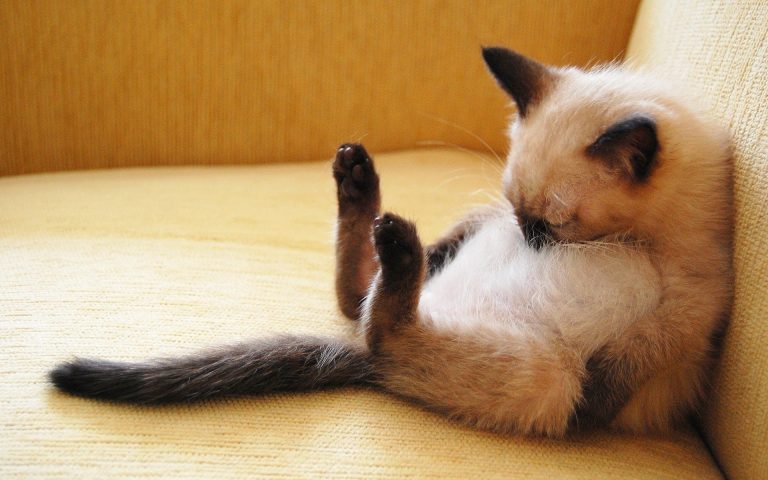Sleep Cognitive Behavioral Therapy with Fido

Border Terrier, ready any time for anything: Maximizes Sleep Opportunities
Yes, Fido can teach us humans a lot about sleep. For dogs and humans our scientific approach to analyzing sleep cycles shows us that dogs and humans have similar sleep cycles but that dogs are much more opportunistic in finding opportunities to nap than humans.
We co-evolved with Fido for at least 25,000 years and given the reality of genetics and epigenetics our sleep cycles are similar. Yet our sleep patterns are slightly different. Ballistocardiographs have shown correlation between the study or micro-motions of the human wrist with sleep cycles in humans. That is also true for dogs. When we watch our dogs sleep we observe similar phenomena: Fido twitches her legs as she runs/dreams, snores, growls and smiles through her naps. Fido is really great fun to watch and shows those micro “wrist movements” characteristic of REM sleep and other phases of sleep in humans. Further analysis of brain waves shows similar patterns too.
Of course dog sleeping patterns are a little different than humans. The main differences are in Fido’s sleeping habits. In general Fido is a better sleeper than most humans and a very smart opportunistic sleeper.

Research shows that “Cognitive Behavioral Therapy” is the simplest way for humans to improve sleep, and our best friends can help guide us to better quality sleep. Of course, first we must understand sleep, and there is no better way to understand sleep than to quantify sleep with a solution such as the Sleeptracker.com Monitor. The Sleeptracker monitor gives you a comprehensive daily “Sleep-Score”, analysis and personalized coaching insights to improve sleep quality without changing any of your bedding or habits, completely non-invasively, in the privacy of your home. For us humans it’s essential to quantify first in order to form a good understanding of where we stand and what our goals can be.
And now with a good quantified view of our sleep, watching Fido carefully can complement our quantification with practical cognitive behavioral therapy practical advice.
First question: How much sleep does a dog get (and how much sleep does a dog need?)
Dogs are opportunistic in their sleep patterns. They get all the sleep that they can get when they can get it. They are always ready for any canine future. This is what we can learn from Fido: If there is an opportunity to nap, even for 10 minutes, Fido will. Intuitively dogs feel this. Fido is ready to go for a walk any time, well-rested, full of energy. At 5 pm or 3 am, Fido has the same enthusiasm for a walk. On the other hand, we humans are generally not ready to go for a brisk walk at 3 am an get back to bed. That’s because we are all chronically sleep deprived, perhaps partly because we are all missing the opportunities that we may have to “recharge” during the day. Practically, to get some regenerative sleep, we need as little as 10 minutes and 45 minutes is about a complete sleep cycle and wonderful. But we always have “something better to do”. Facebook never sleeps! (But better sleep habits can make us “better at Facebook”!)
Depending on your dog’s size she may need more or less sleep. In general smaller breeds like Border Terriers need less sleep than larger breeds like St. Bernards that may need as much as 18 hours of sleep a day. This article is based on my practical work for the last 5 years with several Border Terriers as well as published research. Border Terriers are athletic and very smart working dogs, bred for their abilities and seem to have a functional and instinctive approach to most of what they do. They are working dogs and they are ready to work hard. And they sleep about 12 hours a day in the aggregate on the average, with limitless energy for hunting rats or taking endless walks/runs on the beach any time of the day or night.
Second Question: How much sleep do human’s need?
Practically as much as sleep as humans can get. We are busy with family, work, hobbies, exercise, Facebook and our sleep budgets are shrinking.
From a CBT perspective we need to learn from Fido:
Be as opportunistic to nap as possible.
From a sleep quality standpoint we need to:
Improve our Sleep Score using advanced non-invasive quantified-self tools such as the Sleeptracker.com Monitor.
By making simple little CBT changes such as eating less before bed and avoiding carbohydrates, drinking that last glass of water 30 minutes earlier, burning that extra stored energy by working out with more intensity (Long leisurely walks are great for the soul but don’t do much for the body) etc…
Yes, one last thing: High Intensity Exercise Can Help Sleep Quality and recovery.
Take a look at Fido, go for a one hour leisurely walk. Great smells great experience, meet other canines and humans. But once Fido gets home, Fido is ready to play ball and run and sprint and do ludic intervals. Then Fido crash into deep sleep. That’s CBT right there. I need not say more!
PS For our Cat loving friends, sleep cycles and patterns are fairly similar. Cats tend to sleep even more than dogs and when cats play and hunt it tends to really be HIIT (High Intensity Interval Training). They are now focused and ready to go at it for as long as it takes and then, deep restful sleep!
